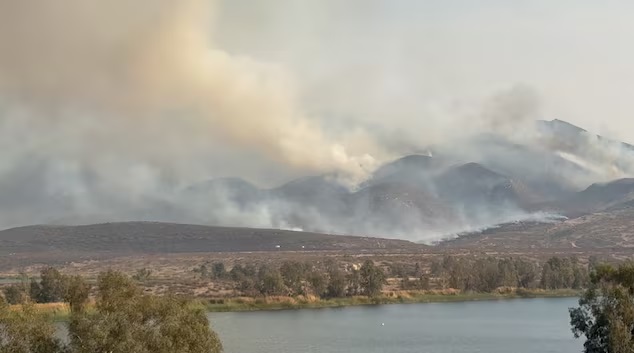
Fire-ravaged Los Angeles braces for toxic rain runoff
The fires, which began on Jan. 7 and are still not fully contained, have killed 28 people and damaged or destroyed nearly 16,000 structures. The rain will bring cleaner air and improve fire-fighting conditions, but some authorities have expressed concern that overall rain will make things worse.
Fire "ripped through homes, vehicles, electronics, plastics, chemicals, furniture, and countless everyday materials, creating a dangerous mix of toxins," LA Councilmember Traci Parks warned residents this week as she announced efforts to contain the runoff. "When it rains, they flow into our gutters, storm drains … eventually our beaches."
Workers placed concrete barriers used to control highway traffic along the Pacific Coast Highway and in Palisades neighborhoods above the coastline to prevent landslides, like those that killed 21 and caused hundreds of millions of dollars of damage after a fire seven years ago in Santa Barbara County.
Other workers put cloth covers and straw barriers around storm drains to filter out pollutants and slow water flow.
Trucks hauled away burned-out cars, many of which are toxic messes. The work is far from done: hulls of incinerated cars line roadsides and fill driveways, and many drains appeared unprotected.
Much of the work observable in the Palisades focused on capping broken gas and water pipes, repairing power lines and patching roads. President Donald Trump visited the area on Thursday.
The forecast for Saturday, Sunday and Monday is light rain. Still, the U.S. Geological Survey says that short, intense rain can trigger debris flows, with a map showing that much of the area of the Palisades and Eaton fires would have a high likelihood of hazard with a 15-minute burst of rain dropping between a quarter and half an inch (6-13 mm).
While toxins from burned houses are at least partially contained by their foundations, vehicles and mobile homes are typically parked on impermeable surfaces like asphalt, so when rainwater picks up metals from burned car batteries or tires, it can run straight into the storm sewers.
"There is nothing containing that ash," says Jackson Webster, professor of civil engineering at California State University Chico, who studied the effects of the 2018 Camp Fire in Northern California.
While the immediate danger to human health from dirty stormwater may be limited, he said, the impact on ecosystems including the ocean has not been well studied. Runoff could also sink into soil, contaminating gardens and once well-tended grounds.
In recent days police have escorted hundreds of residents like Kearney back into previously evacuated areas where, even blocks from the worst damage, there are still frequent whiffs of acrid ash. Rain will help, experts say.
"There is no downside, from the air perspective ... a light rain like this is a good thing," says UCLA Institute of the Environment and Sustainability Professor Suzanne Paulson, who studies air pollutants and says falling water captures airborne particles and deposits them in the soil where they cannot be breathed in.
But to many residents, the risks from toxins are incalculable.








